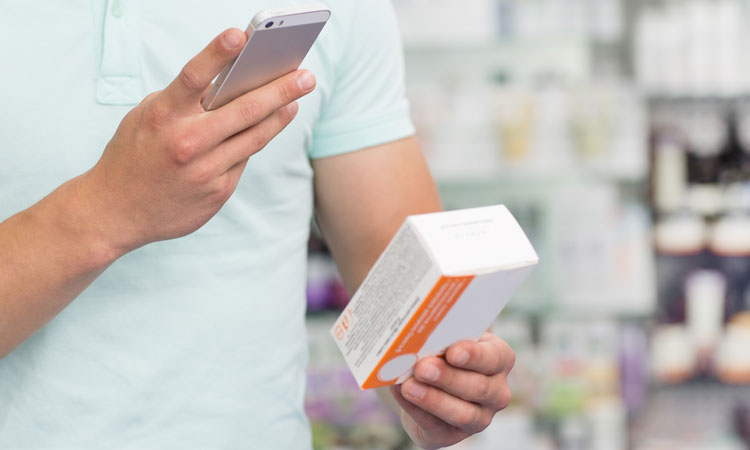Bridging the healthcare digital divide: a gradual approach to adopting ePI
Posted: 25 January 2024 | Ataa Elfaquih (Mayr-Melnhof Group) | 1 comment
As the global healthcare landscape moves towards a digital transformation, a balanced approach that unites electronic product information (ePI) with traditional paper leaflets can help ensure every European citizen, irrespective of their digital access, has unencumbered access to critical medical information. Here, Ataa Elfaquih from MLPS, a subgroup of the European Carton Makers Association, explores the current regulatory landscape.


Within the EU, patient information leaflets (PILs) are not merely a regulatory requirement but a cornerstone of patient safety. These standardised documents provide meticulously curated and scientifically approved information. They detail the medication’s intended use, proper administration, potential side effects and precautions. They are vital to ensuring the safe and effective use of medicines, making them an integral part of healthcare in Europe.
The digital evolution of European healthcare
The European Commission’s proposal for a Directive relating to medicinal products for human use1 grants individual Member States the autonomy to determine the availability of medicinal leaflets, in paper, electronic or both formats.2 This choice will allow Member States to replace PILs with ePI and this proposition has ignited a maelstrom of opinions among stakeholders. While some herald the potential of digital solutions to revolutionise healthcare, others raise concerns about the impact on healthcare accessibility, particularly for demographics less acquainted with digital technologies, making them more vulnerable.
Exploring the benefits of ePI
ePI offers advantages, notably swift access to updated medication information. The European Medicines Agency (EMA) underscores the role of digital platforms in disseminating product information electronically. It emphasises its ability to make information interoperable with electronic health systems such as e-prescription and electronic health records.3
Moreover, digital platforms can be tailored to the needs of patients and healthcare professionals, offering accessible, trustworthy and up-to-date information on medicines precisely when required.
Challenges in transitioning to ePI
While acknowledging the benefits of digital platforms, it is imperative to recognise that transitioning to digital formats of medical leaflets without retaining paper versions raises substantial concerns for patient safety. A large proportion of European citizens do not have uninterrupted access to the digital tools and services necessary to guarantee access to ePI. Even in countries with high smartphone usage such as Denmark, up to 25 percent of the population do not possess a smartphone.4 Across the EU, these statistics become even more stark when looking at the oldest age group, which have the highest need for prescribed medicines.5 According to Eurostat, only 57 percent of people in the 55-74 age group use the internet regularly,6 and only 54 percent of Europeans possess basic digital skills.7 Access to digital communications also remains a challenge in some Member States especially for those groups at risk of poverty and social exclusion (7.6 percent as EU average with some Member States as high as 25 percent).8


In addition, the voice of European consumers cannot be ignored, either. In a survey conducted by The European Consumer Organisation (BEUC) during June and July 2022, in Belgium, Italy, Portugal and Spain, 79 percent of consumers said paper leaflets should be available inside the package even if there is an alternative QR code on it.9 Ancel·la Santos Quintano, Senior Health Policy Officer at the BEUC, also expressed concerns about the potential abandonment of paper leaflets, arguing that digital information should complement rather than replace paper leaflets.10
The Commission’s proposal on medicinal products clearly states that ePI should always guarantee equal or better quality of information for all patients.11 This requirement directly contradicts what is included in Article 63. Ensuring accessibility to all patients always requires a 100 percent level of digital literacy and accessibility. Currently, this level of accessibility cannot be guaranteed in any Member State. We note the Commission has not conducted an assessment on the impact of removing paper leaflets on patient safety. We must put patient safety first and legislate based on evidence before introducing such changes that could have such an enormous impact on patient safety. To ensure no patient gets left behind, we strongly urge retaining the mandatory paper leaflet and implementing a complementary approach between ePI and paper leaflets.
MEP Tilly Metz (Luxembourg, Greens), a prominent voice in the European Parliament, has been a vocal advocate for ensuring that the transition to ePI does not exclude any European citizen. Metz emphasises that the digital divide is a real concern, and that a gradual and inclusive approach is essential. In line with Metz’s stance, stakeholders are considering strategies to safeguard patient safety and accessibility.12
Print on demand: impact on pharmacies and workflow
Article 63(3) of the Directive proposal stipulates that, in cases where paper leaflets have been removed, patients should be guaranteed a paper leaflet upon request in the pharmacy.13 This policy, known as ‘Print on Demand’ (POD), is proposed to mitigate the lack of digital accessibility of many patients. However, POD would be an unworkable alternative to the current system of paper leaflets.
According to Eurostat, only 57 percent of people in the 55-74 age group use the internet regularly, and only 54 percent of Europeans possess basic digital skills
The Pharmaceutical Group of the European Union (PGEU) presents a compelling argument against the proposed POD policy. The responsibility of printing paper leaflets is currently a key regulatory obligation for pharmaceutical companies. PGEU emphasises that, in addition to causing serious workflow disruptions and delays in the delivery of medicines to patients, transferring this responsibility to pharmacies would place an unreasonable financial burden on them.14
Furthermore, as the leaflet must be 100 percent accurate 100 percent of the time, industrial-level printers have been designed, are calibrated and maintained precisely for printing medicinal leaflets, being able to read each printed leaflet to avoid errors. Basic desktop printers used by pharmacies could be subject to malfunction and a risk of character substitution, possibly altering the content and meaning of the pharmaceutical leaflets. This can lead to severe health risks for the patient, in which case the pharmacy would be held liable. POD also fails to consider the different routes through which patients receive their medicines today and the workflow challenges that would be created by printing the product information separately; this increases the chance of the product information getting lost or separated from the medicine during transport. Therefore, POD is not a viable alternative to paper leaflets.
Patient privacy and data security
The digitalisation of leaflets also raises concerns about patient privacy and data security. With the increasing threat of cyber-attacks, the safety of online health data is under scrutiny. It is therefore vital to provide patients with offline access to critical information to ensure their privacy remains uncompromised. To ensure privacy, patients must be given the option to access any critical information offline. A complementary approach would allow patients to opt out of ePI over privacy concerns.
A gradual approach and education
Recognising the potential challenges and burdens that a complete shift to ePI might pose, there is support for a gradual implementation, especially in hospital settings and for products administered by healthcare professionals. Educating citizens about the benefits of ePI and their right to access printed leaflets remains essential in ensuring a smooth transition.
It is vital to provide patients with offline access to critical information to ensure their privacy remains uncompromised
The proposed five-year transition to ePI appears hasty, considering the digital challenges faced by many Europeans. A more extended ten-year transition period would be more prudent to safeguard patient safety and ensure that vulnerable populations are not left behind.
Conclusion
In conclusion, the imperative for balanced medication information access in Europe champions a future where ePI and traditional PILs work in harmony to uphold patient safety and equitable healthcare. Medical Leaflets = Patient Safety (MLPS) spearheads this cause, ensuring that every European citizen, regardless of their digital literacy or access, enjoys unencumbered access to crucial medical information. While the concerns raised regarding the POD policy are valid, collaborative efforts among stakeholders and the healthcare industry can mitigate potential disruptions, safeguarding patient wellbeing. A ten-year transition period, rather than the proposed five, is necessary to accommodate the digital divide. In this dynamic landscape, the MLPS vision stands as the compass guiding patient-centric progress, ensuring the coexistence of digital and traditional leaflets for the benefit of all.
About the author
Ataa Elfaquih is the Global Quality Director for the Pharma and Healthcare unit of Mayr-Melnhof group and a recognised expert in quality management with significant experience in the field. During the last 10 years he has held several leadership positions, helping shape the strategy of various notable organisations. Ataa is passionate about patient safety and is committed to delivering valuable insights to his readers. He has a deep understanding of the importance of patient safety and the significance of accessible and accurate information by patients.
References
- European Commission, (26 April 2023). “Proposal for a Directive of the European Parliament and of the Council on the Union code relating to medicinal products for human use, and repealing Directive 2001/83/EC and Directive 2009/35/EC.”
- Article 63
- EMA (29 January 2020). “Key principles for the use of electronic product information for EU medicines”
- Breinstrup T. (2017) “Danmark har flest smartphones i hele verden”, Berlingske,
- Eurostat (2022) “Medicine Use Statistics” European Commission.
- Eurostat (2022) “Internet access and use statistics – households and individuals.”
- Eurostat (2022) “How many citizens had basic digital skills in 2021?”
- European Commission, (28 June 2023) “Access to essential services: key challenges for the most vulnerable – report”
- Euractiv (26 September 2023). “Digital and Paper: Ensuring Universal Access to Pharmaceutical Information.”
- Euractiv (6 October 2023). “The mixed blessing of digitalising medical leaflets”.
- European Commission (26 April 2023). “Proposal for a Directive of the European Parliament and of the Council on the Union code relating to medicinal products for human use, and repealing Directive 2001/83/EC and Directive 2009/35/EC.” Article 63
- Euractiv (26 September 2023). “Green MEP advocates for keeping paper medicine leaflets.”
- European Commission (26 April 2023). “Proposal for a Directive of the European Parliament and of the Council on the Union code relating to medicinal products for human use, and repealing Directive 2001/83/EC and Directive 2009/35/EC.” Article 63
- PGEU (2023). “Position Paper on the revision of the general pharmaceutical legislation”
Related topics
Related organisations
European Commission (EC), European Medicines Agency (EMA), European Parliament, Mayr-Melnhof Group, Pharmaceutical Group of the European Union (PGEU), The European Consumer Organisation (BEUC)









I completely agree with the idea of adopting ePI as a gradual approach to bridging the digital divide. It’s essential to ensure that the technology is accessible and user-friendly, especially for those who may not be tech-savvy. By taking a step-by-step approach, we can help bridge the gap between the digital haves and have-nots, and promote greater inclusivity in the digital age.